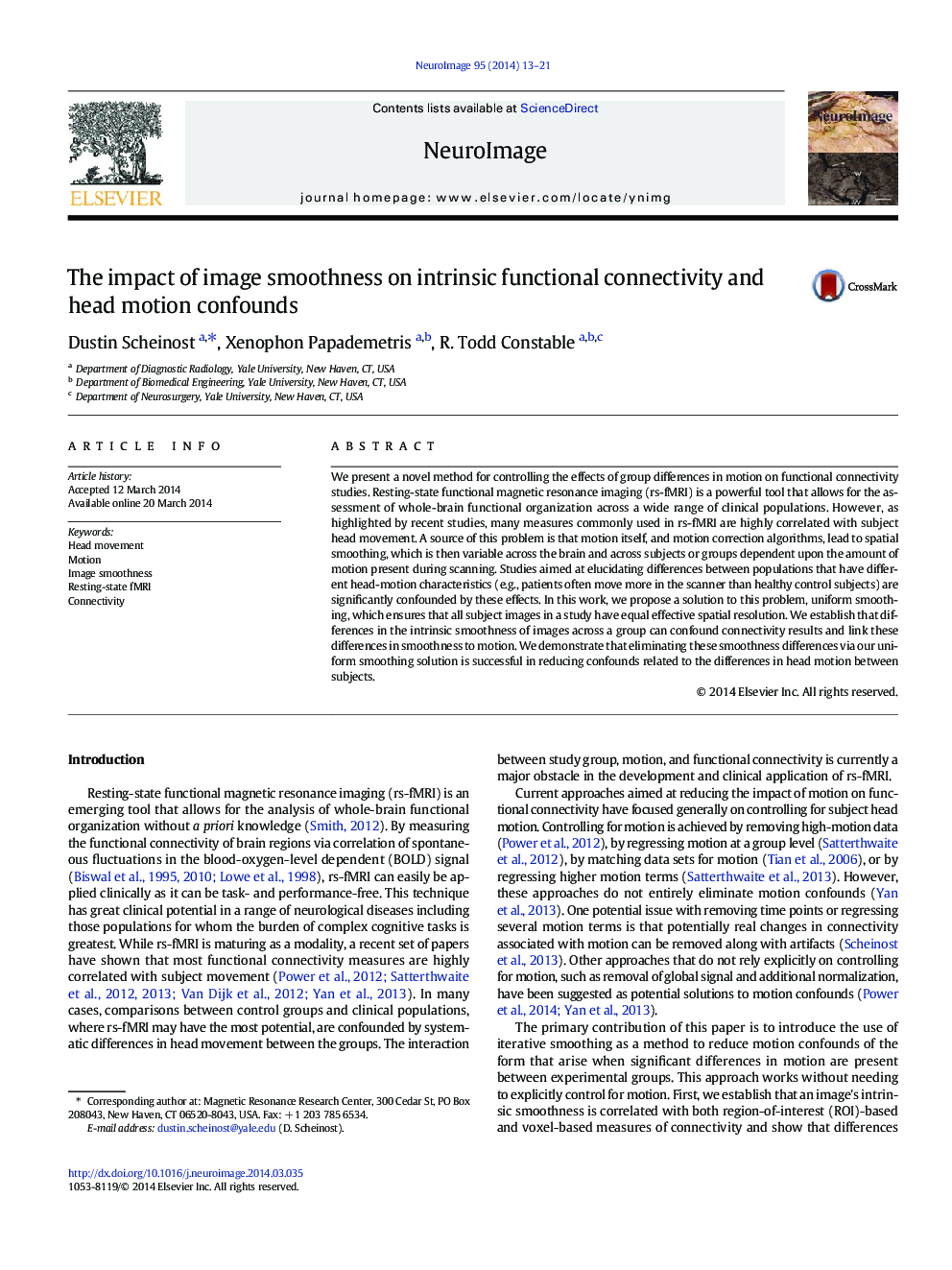| Article ID | Journal | Published Year | Pages | File Type |
|---|---|---|---|---|
| 6026829 | NeuroImage | 2014 | 9 Pages |
Abstract
We present a novel method for controlling the effects of group differences in motion on functional connectivity studies. Resting-state functional magnetic resonance imaging (rs-fMRI) is a powerful tool that allows for the assessment of whole-brain functional organization across a wide range of clinical populations. However, as highlighted by recent studies, many measures commonly used in rs-fMRI are highly correlated with subject head movement. A source of this problem is that motion itself, and motion correction algorithms, lead to spatial smoothing, which is then variable across the brain and across subjects or groups dependent upon the amount of motion present during scanning. Studies aimed at elucidating differences between populations that have different head-motion characteristics (e.g., patients often move more in the scanner than healthy control subjects) are significantly confounded by these effects. In this work, we propose a solution to this problem, uniform smoothing, which ensures that all subject images in a study have equal effective spatial resolution. We establish that differences in the intrinsic smoothness of images across a group can confound connectivity results and link these differences in smoothness to motion. We demonstrate that eliminating these smoothness differences via our uniform smoothing solution is successful in reducing confounds related to the differences in head motion between subjects.
Related Topics
Life Sciences
Neuroscience
Cognitive Neuroscience
Authors
Dustin Scheinost, Xenophon Papademetris, R. Todd Constable,
